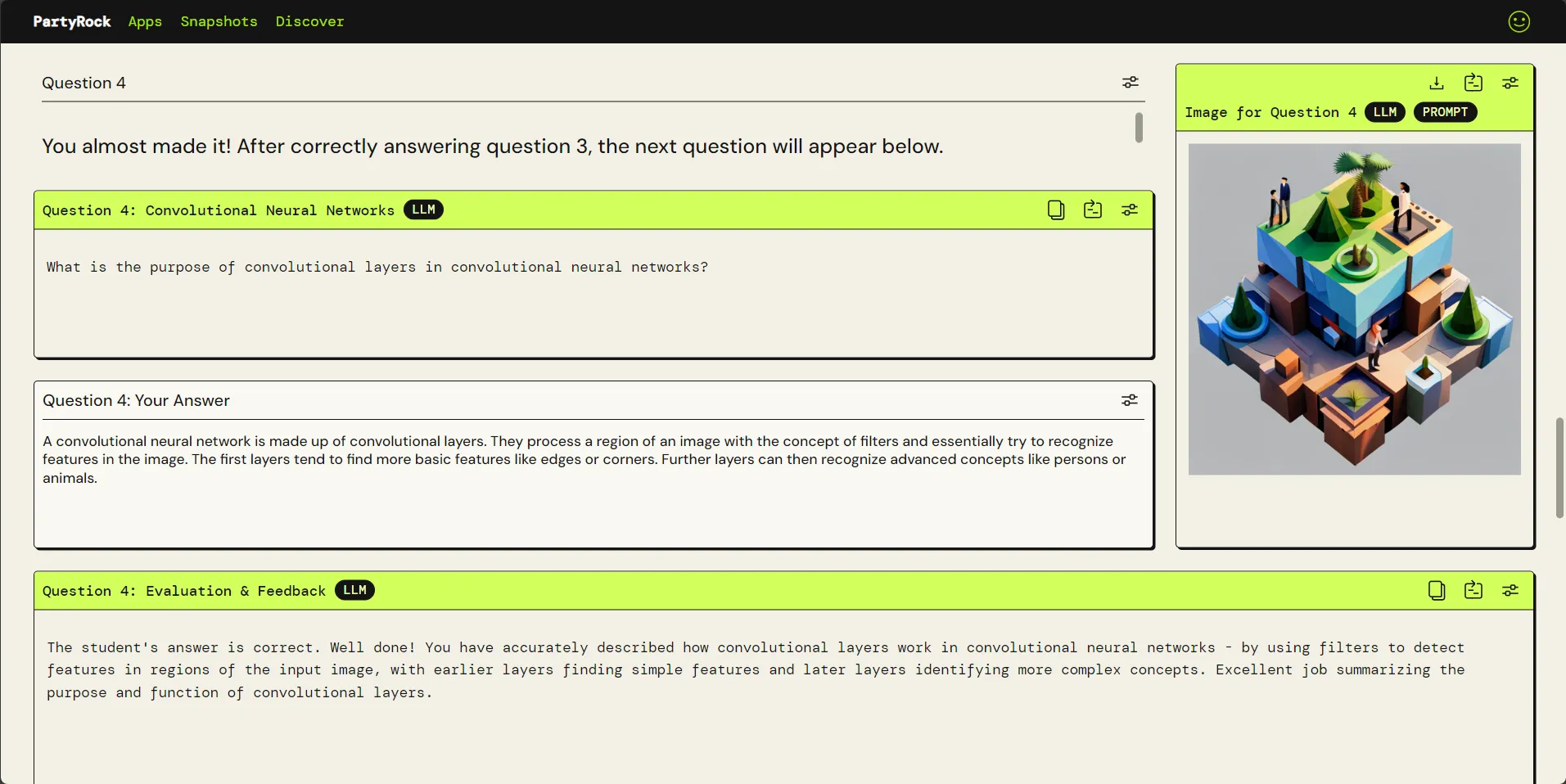AI x plainer – An Interactive AI Learning App
Discover how to integrate generative AI into machine learning courses at a university, and learn about the challenges and innovations this brings, including the creation of AIxplainer, an interactive learning tool based on PartyRock.
Published Mar 11, 2024
As a professor at the University of Applied Sciences in St. Pölten, Austria, I've observed the dual impact of generative AI in education. This article discusses its role and how we are adapting teaching methodologies to leverage its capabilities effectively.
Traditional teaching methods in coding are becoming less effective due to the ease of generating basic code with AI assistance. However, constructing large system architectures and corresponding code remains a predominantly human task. The approach I advocate involves assigning progressively complex tasks, where students can and *should* utilize AI for the more advanced challenges that extend beyond classroom teachings. It is imperative, however, that students can articulate their understanding of the code during oral examinations, ensuring they comprehend and can integrate the AI-generated code within larger applications.
In my Machine Learning course, a comprehensive written exam requires students to demonstrate a deep understanding of the concepts. To achieve this, I designed questions that challenge students to apply knowledge rather than recall facts. For instance, we use the Moodle online system to create dynamic questions with variable elements, necessitating analytical thinking. The challenge lies in the temptation for students to rely on AI tools to complete Jupyter Notebook-based exercises. For exam preparation, this can undermine the depth of their learning. To address this, a more interactive and engaging learning approach is necessary.
AIxplainer is an application designed to teach AI concepts using AI itself. It offers instant feedback on student responses, guiding them towards the correct understanding. Developed with Amazon PartyRock, a no-code framework for generative AI applications, AIxplainer uses foundation models for text and image generation. The prompts to the large language model (LLM) specify the topic, allowing the LLM to craft unique questions, ensuring varied and continuous learning.
A critical challenge is accurately assessing student answers. While LLMs can produce extensive text, the focus for a learning tool is on concise and relevant responses. The evaluating AI is programmed to recognize responses that address the main points without necessarily seeking additional information. This balance is vital for effective learning.
To maintain engagement, the interface design is crucial. I mitigated the overwhelming nature of textual interfaces by dividing content into sections and incorporating relevant images generated by AI, even for complex topics like neural network layouts. Additionally, tying the app's success to tangible benefits, such as bonus points in the actual university course, creates real-world relevance and motivation.
AIxplainer is available for trial at https://partyrock.aws/u/andijakl/Dsb2X119I/AIxplainer%3A-An-Interactive-AI-Learning-App. Feedback on its utility and effectiveness in supporting your learning journey is welcome.

